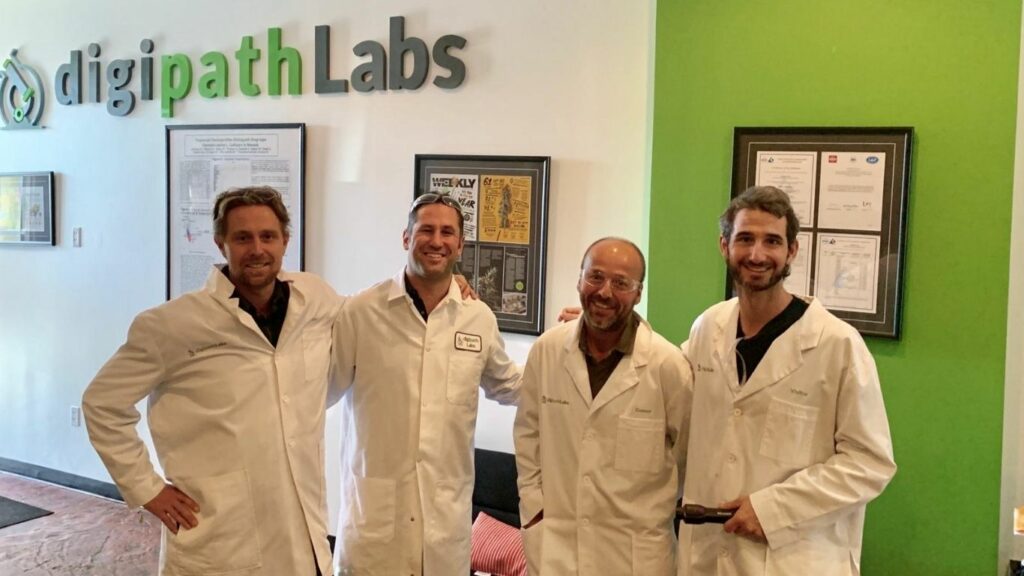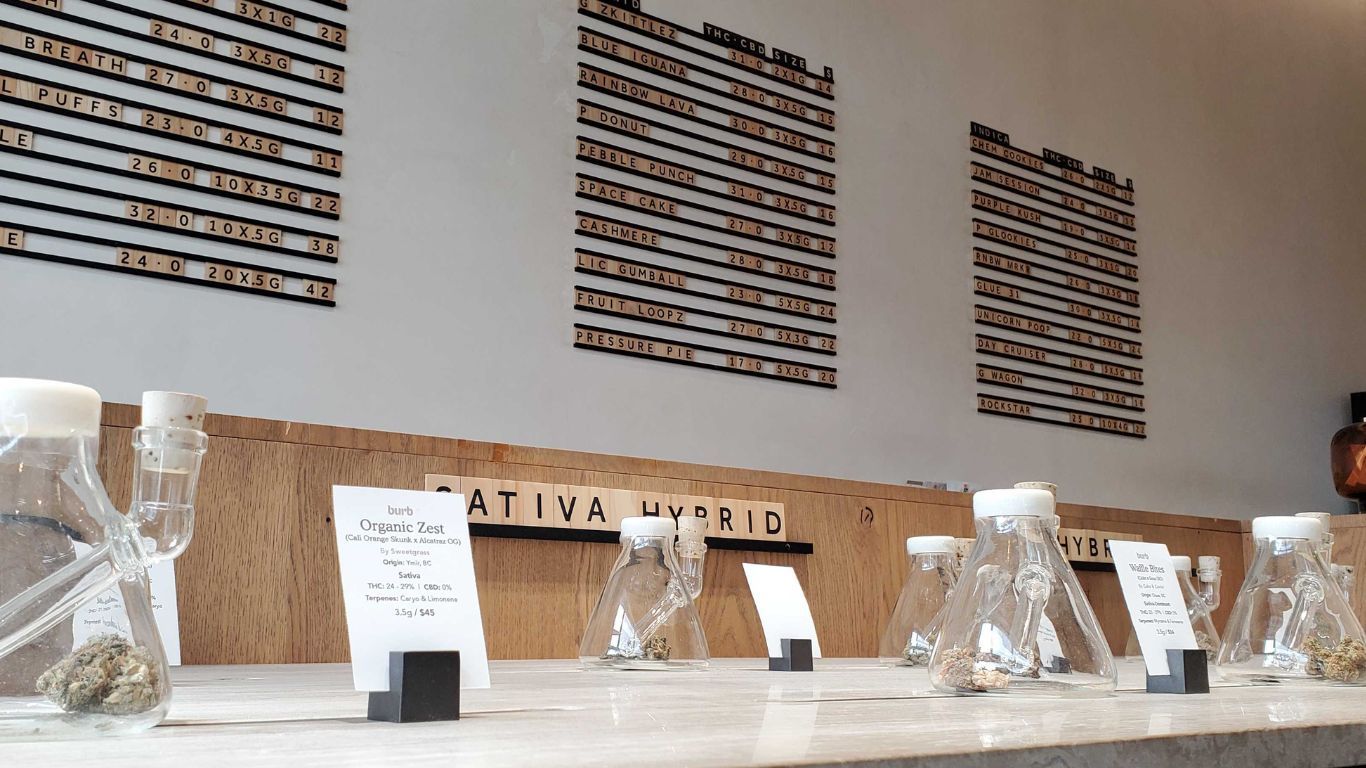
Tim Harvey wants to change how consumers choose and buy cannabis and give cannabis growers and breeders a better understanding of what they are actually growing.
The founder and CEO of Lighthouse Genomics, Harvey has been working with a handful of researchers since 2016, taking samples of cannabis plants from partners in Canada and around the world, in order to build a genetic database of cultivars.
Using this database to help growers and breeders better understand and identify the genetics of the plants they are growing, Harvey says the ultimate plan is to build a certification system that is geared towards consumers to assist them in knowing what they are smoking or vaping and make more informed choices.
This certification system would draw from their database of thousands of cannabis varieties, each measured by 40,000 genetic data points. Optional reports will allow cannabis growers to check for consensus around the conventional “strain name”, which specific family the cultivar belongs to and how close to other similar varieties it is.
As an example, Lighthouse just spent the last six months testing several varieties of cannabis in the Canadian market, from plant samples from growers to products on shelves, and comparing their “genetic fingerprint” with each other to map similarities and differences.
Two of those strains they identified for this research, Pink Kush and Blue Dream, gave them two different examples of strain name accuracy and genetic variation within strain names. While samples of Pink Kush from all parts of Canada showed an extremely narrow range of genetic differences between them, Blue Dream showed not only a wider diversity of genetic traits but also had more outliers.
The reason for this, explains Harvey, is likely in the origin of those two strains and how strain names have historically operated in the illicit market. While Pink Kush is alleged to have begun as a single superior cutting in BC that was passed from grower to grower, Blue Dream is a strain that originated and became popular in California.
This means Blue Dream was likely to have found its way into Canada in the form of different seeds, which provides exponentially greater genetic variation than a population of clones. In addition, because these may have been harder to get and even harder to authenticate, the few extreme outliers—plants that may have been labelled Blue Dream but were possibly an entirely different variety—could have been a mistake when labelling a plant, or renamed of a desire to hop on a fad name.
“The results are highly informative,” explains Harvey. “In the case of Pink Kush, there is great uniformity of genetics – eight of the nine samples tested from across the nation were in fact clones of one another. But this was not so with Blue Dream. Perhaps because this variety originated in California, there is a cluster that appears to be siblings, and yet some outliers which may be Blue Dream in name only.”
“It’s the same underlying technology that 23andMe uses to provide a genomic profile for humans, and the same platform a lot of agricultural crops use. We’re doing the same thing for cannabis.
Anders Goncalves da Silva, Lighthouse Genomics
Rather than contradicting many legacy strain names, he says the research actually supports the common understanding of the origin of these two varieties. While their Pink Kush examples were all very similar, even the Blue Dream still showed a similar ancestry in many cases, if not as tightly related.
“It’s encouraging to see that the industry has remained true to that tradition when it comes to Pink Kush,” he says. ”And there is a lack of consensus when it comes to Blue Dream, and if there is an authentic cut, but certainly there does seem to be consensus towards a zone.”
“It’s encouraging to see that the industry has remained true to tradition in the case of Pink Kush being associated with a very specific genetic identity. Even with Blue Dream, we also see consensus, with the Blue Dream name assigned to cuts that are clustered in what appears to be a ‘zone of authenticity’ within the cannabis population.”
Looking at these traditional varieties in terms of families is a useful analogy, says Anders Goncalves da Silva, the Chief Bioinformatics Officer at Lighthouse. He likens their genetic mapping to that of a popular DNA testing company for people.
“Essentially what we’re doing is similar to what 23andMe does,” says da Silva. “It’s the same underlying technology that 23andMe uses to provide a genomic profile for humans, and the same platform a lot of agricultural crops use. We’re doing the same thing for cannabis.
“So we used the same technological platform to develop an assay specifically for cannabis. We get samples from different cannabis products, extract the DNA, isolate the DNA from the tissue and then it goes through our platform for genotyping.”
Philippe Henry is a biodiversity researcher and adjunct professor at the University of Northern British Columbia who through his own company, Egret Bioscience lab in Kelowna, teamed up with Lighthouse on their DNA analysis of Pink Kush and Blue Dream.
“This is the way other major crops are tested and sold, and now cannabis is going in this same direction,” says Henry.
“Cannabis is catching up to all these other crops. It was the last of the billion-dollar commercial crops to have its genome sequenced, it’s got a lot of runway ahead of it in terms of the scientific standards compared to where these other crops are at.”
Tim Harvey, Lighthouse Genomics
This helps consumers, he says, especially medical users, because they can more accurately identify the specific variety they are looking for with a specific, replicable effect. For breeders and growers, it can both help them know with certainty what they are growing and help them better identify new or unique varieties that can help them distinguish themselves on the market.
Another advantage, especially for new breeders just entering the market—often through a nursery or micro cultivation licence—is to hold on to and protect their own unique genetics they bring in with them through a new licence.
“The small-time breeder who wants to outsource some of the cultivation to other groups and still have the ability to know they can audit and take samples from a grow room or the shelf and verify that another company they worked with aren’t selling particular genetics under a different brand,” says Henry. “Now we’re really getting to a place where people can do this, and it’s really affordable with this platform.”
Harvey agrees.
“Breeders today have so many more tools,” Harvey says. “Back in the day, it was their nose and experience, and maybe a few metrics like THC potency. Today it’s gone a step farther because of the tools that companies like Lighthouse and Egret are presenting to the breeders.”
“This will also level the playing field, providing smaller, more craft-scale businesses with a chance to really showcase their unique, valuable assets and draw attention to this. One huge thing we’re seeing since legalization is either the nurseries or the breeders that want to transition now into an LP, or be the genetic provider for the LP, now that they can migrate new genetics in.”
“This is the way other major crops are tested and sold, and now cannabis is going in this same direction.”
Philppe Henry, Egret Bioscience
“With the Cannabis Authenticity and Purity Standard, it’s about being able to verify for consumers that not only is the product they are buying chemically stable between batches, but the genetics are the same batch after batch,” continues Harvey. “Cannabis is catching up to all these other crops. It was the last of the billion-dollar commercial crops to have its genome sequenced, it’s got a lot of runway ahead of it in terms of the scientific standards compared to where these other crops are at.”
“I would like to see genetic testing implemented as an industry standard. I’d like there to be transparency over the identity of the products on the shelf. Because ultimately, it’s all about giving the consumer a consistent experience. All parts of the supply chain deserve transparency and authenticity, but above all, these tools provide a powerful opportunity for producers to build trust with the cannabis consumer, just by doing the right thing.”
You can watch our recent presentation with Tim and Philippe here on YouTube












